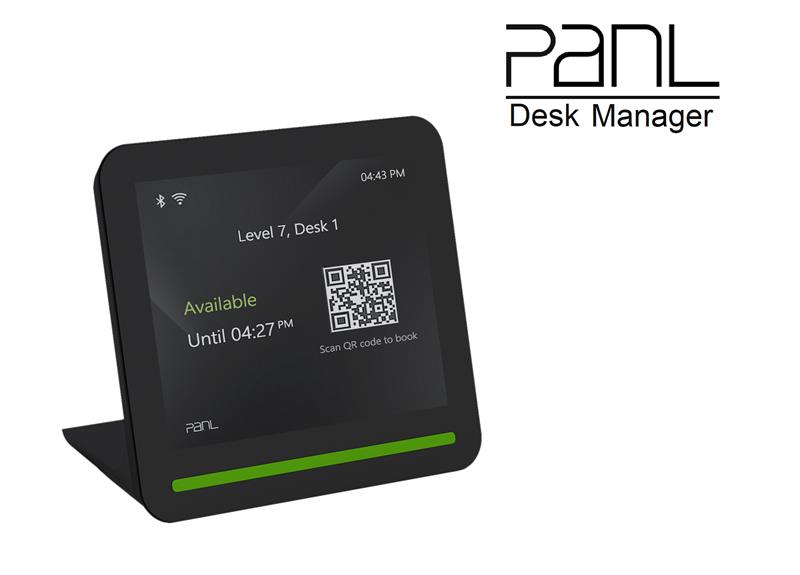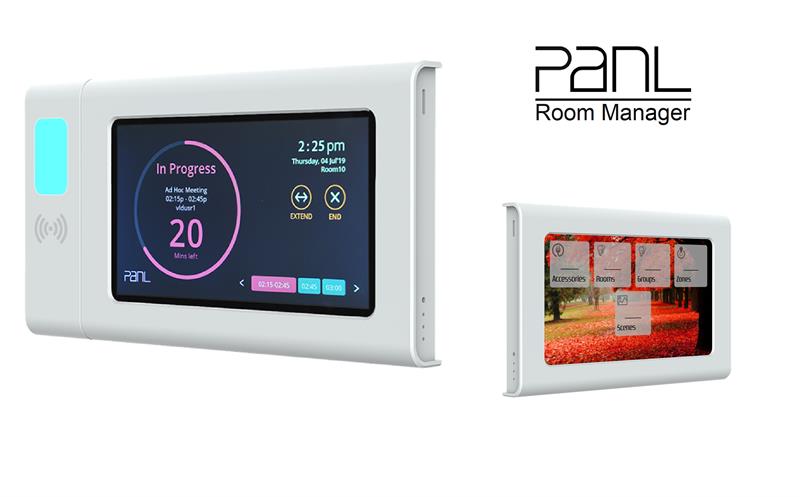Artificial intelligence, the internet and new forms of communication technology are creating a modern workspace and the pace of change is accelerating.
While Industry 4.0 has tended to be associated with factories, technological improvements that support greater efficiency, interconnectedness, productivity and sustainability have also found their way into every aspect of office life.
Surveys show that a growing number of businesses expect, and are planning for, more of their workforce to work remotely. Business leaders are looking at radical approaches as research suggests that over 75% of employees could end up working remotely by the end of this decade.
How can you use technology to combine productivity improvements with the increased levels of freedom and flexibility that remote workers say they enjoy? Flexible working has been found to make employees feel more valued and reduced levels of employee turnover – a significant cost to businesses.
In response, companies are looking at real time collaboration, integrated communication platforms and cloud computing to enable more of their employees to work more effectively – whether at home or in the office.
The Internet of Things is driving much greater connectivity and the interconnected smart office is empowering office workers, enabling them to work more effectively.
Over the years the way we communicate and interact has changed drastically, as Jeremy Keefe, Regional Vice President Sales, UK & IRE, Poly explains.
“The office has been around and been evolving for years. While there’s a drive for more flexible working I think we, as humans, like to collaborate and that’s not changed. What has changed is the way in which people communicate. There are three big drivers here and that includes: flexible office space; the growth in huddle rooms and mobility and they are massive commercial drivers for companies like Poly, who specialise in communications technology.
“Many companies now have regional offices offering the chance to be more flexible in the approach they take in how people work, and we are seeing innovative office spaces being developed.”
Keefe makes the point that when people come into an office they now expect much greater flexibility, whether that’s in terms of a room system or when it comes to audio or video communication.
The successful office is one in which collaboration between individuals, regardless of location and proximity, is possible.
Offices are seeing more screen sharing and people are embracing real-time collaboration via the use of VR and AR, which is helping to expand the scope of projects on which different remote teams can work.
“Today, people want to be able to collaborate and share, wherever they are. That’s the biggest challenge we face in this space and it’s not helped by the complexity of systems that currently exist,” says Keefe.
“Talk to any enterprise and the majority are using three or more different platforms. So, embracing greater simplicity is critical.”
Efficient resource management
Using resources efficiently is a key driver in the office and, last year, Bridgetek expanded its PanL portfolio to better use assets within the office and significantly reduce day-to-day operational costs.
“The PanL Desk Manager (PDM) enables companies to automatically manage shared working facilities where ‘hot desking’ policies are in place. It makes it possible to book desks, so that companies can utilize all the available space,” explains Gavin Moore, customer support manager, Bridgetek.
Every desk within the PDM system has a PanL35L display unit placed on it, which is then connected to a web portal via the office Wi-Fi access points.
These displays have a 3.5-inch 320x240 resolution TFT, plus an RGB LED strip indicator, a built-in buzzer and have 802.11b/g/n-compliant Wi-Fi connectivity.
“Staff can set everything up remotely through Microsoft Outlook or by utilising a downloadable mobile app,” says Moore. “By referring to the Desk Viewer (which gives an accurate depiction of the office floorplan), it is possible to see where desks are available without having to waste time searching throughout the building.”
In addition, it is possible to determine who has been assigned desk space - allowing them to book neighbouring desks if they are working on a particular project with colleagues.

“The reserved desk space can be claimed via a QR code,” Moore explains, “while an automatic release feature means that if the person who has booked the space fails to show up on time, it can be made accessible again to other prospective users.”
The electronics at the heart of each PanL35L in the PDM system comprises of a dual-core 32-bit LX6 microcontroller and a sophisticated BT813Q graphic controller.
The PDM’s web portal gives facilities managers a detailed overview of all the desks in their inventory and this can be applied to a floor, an entire building or even to multiple sites.
“This system makes it possible to analyse supply and demand - so that further desk resource may be brought in as required. Users can also examine booking profiles, set time slot duration, allocate desks to certain employees, determine the maximum number of desks that can be booked and add new desks onto the system,” according to Moore.
The company’s PanL Room Manager (PRM) comprises of display units, MEMS microphones, ambient light sensors, buzzers and speakers and is located at the entrance to a room and connected to a centralised hub, with the booking software capable of interfacing with Microsoft Outlook. Office workers can see which meeting rooms are free and make alterations to existing bookings. Access to the room requires entry of a passcode on the display’s touchscreen or swiping of an RFID tag in the office worker’s identity badge.

Embracing new technology
As with every aspect of modern life artificial intelligence (AI) has established itself in the modern smart office and is being used to increase productivity and boost overall levels of efficiency.
IBM has recently introduced AI into its TRIRIGA solution to help facility management to use their office space and deliver a more engaging workplace experience.
TRIRIGA is an Integrated Workplace Management System that looks to combine occupancy data from sources, such as WIFI and/or IoT sensors, with newly embedded AI.
Through the smart application of data TRIRIGA can be used to generate information and insights into how office space is being used and can enable a much smarter data-driven decision making process about the way workspaces are managed - reducing space wastage and saving on operating costs.
According to a report from commercial real estate services firm JLL, 30-40% of commercial space is underutilised. Embedded AI can help identify occupant trends and patterns, down to a single floor, to better anticipate and manage employee occupancy needs, adjust office layouts and address relocation requests.
TRIRIGA comprises of an Assistant, which is a smart, conversational AI tool which uses natural language processing to help users engage with the spaces around them. It can be used to coordinate staff schedules and reserve conference rooms, as well as service requests such as lighting and catering, or locate a colleague’s assigned workspace.
“Employees are a key element to organisational growth and development, driving companies to create cost-effective and engaging workplaces that help attract and retain top talent,” explains Kareem Yusuf, Ph.D., general manager, AI Applications, IBM. “The implementation of TRIRIGA with embedded AI provides corporations and facility managers with insights into how they can more effectively utilise space across their enterprise. This technology can help companies address the growing expectations of today’s modern workforce and achieve better business results.”
By enabling these types of tasks to be handled by AI, a lot of time and money can be saved and productivity can be given a real boost.
Alongside AI, however, diverse technologies such as 3D printing and virtual and augmented reality are predicted as having a revolutionary impact on the smart office.
A large number of VR/AR devices have come on to the market, including the Oculus Rift and the HoloLens from Microsoft and while their impact is limited, at present, they are expected to change the workplace in terms of how people work together.
In the future we could be doing everything in an immersive virtual world or an augmented world that has been integrated into the real world of the office.
When we talk about the office we tend to focus on the technology with which users interact, however, underpinning all of this is the development of cloud computing.
With billions of pounds being invested in the growth of cloud computing Amazon, Google and Microsoft are all providing cloud solutions to businesses and the market is booming.
Businesses using the cloud will be able to grow significantly without having to move office or even buy more hardware, with applications being stored and operated online. Not only that, as more workers are expected to work remotely the cloud will make it easier to manage them.
Workers will be able to access the office from anywhere, collaboration among teams will be enhanced and communication will be simpler and easier.
Energy efficiency
With the focus on climate change energy saving and environment friendly solutions are also being applied to the office workplace.
Companies are looking to use energy-saving lighting and more office buildings are integrating renewable energy solutions, such as solar and wind, to meet high energy needs.
AI is being used to monitor energy usage and to improve energy efficiency while more efficient air conditioners, advanced window controls and better building materials are being used to make offices even greener.
“We want to make people more comfortable and productive and the office more efficient,” explains James Thackrah, Segment Lead at Schneider Electric.
“People are working in new ways and building managers need to improve space management, people management and operational efficiencies. By optimising space it is possible to free-up as much as 15 per cent of the property which means you can use the facility more effectively.
“A comfortable environment in which people can find a desk or book a room can provide a productivity gain of 25 minutes a day per employee, but more than that by actively monitoring light, temperature, humidity, CO2 and noise levels you can improve occupant well-being.”
The company’s EcoStruxure platform uses wireless sensors, the cloud and real-time data to provide workplace analytics.
“This suite of tools and services has been designed to make it easier to implement the IoT and simplify the collection of data from devices around the organisation. It uses standard open communication protocols and the data can be analysed in the cloud or at the edge,” according to Thackrah.
The company has developed the Workspace Advisor Service that delivers data and analytics that can be used to monitor well-being, space optimisation, the employee experience and operational efficiencies.
“For example, the operational phase of a building accounts for 75 per cent of a building’s costs, so if we can open up space or close off those areas that aren’t being used we can cut costs in terms of heating and lighting, for example. That not only saves money but is much better for the environment.”
The company has also developed the EcoStruxure Engage Enterprise app which, as Thakrah explains, is intended to deepen the employees’ connection to the workplace environment.
“The workplace environment is the number one priority for most businesses, and this app enables users to access rooms, navigate through offices, file a maintenance report or manage temperature, lighting or blinds. You can add to the app and it is easily refined so that it grows with the needs of the business.”
Simply put this, along with other smart technology, is helping to translate data into actionable intelligence helping office workers to work smarter and making it possible to do so in a better environment, which is both energy efficient and more sustainable.













